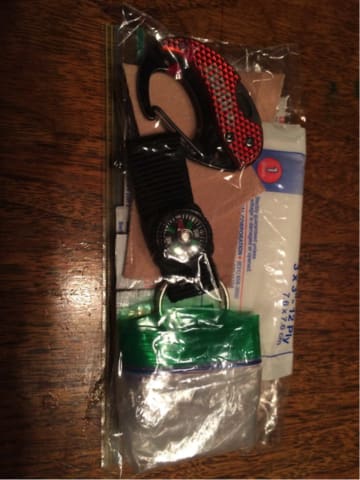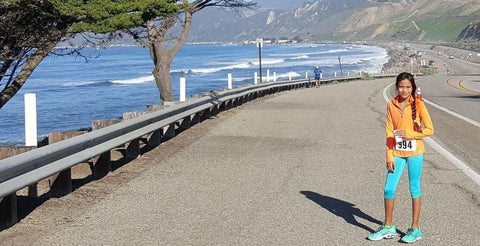Author: Jenn Collins
Part of the appeal of venturing out into the wilderness is the thrill of the unknown. On a good day that might mean seeing an incredible sunrise from the trail or a beautiful sunset over the canyons. On a bad day, it might involve getting lost, disoriented, or injured. Runners and hikers need to travel light – extra pounds means extra exertion – and finding the fine line between properly prepared and overburdened is key. Having a running survival kit can make all the difference in ensuring you're prepared for any scenario.
Fortunately, armchair survivalism is very chic right now, and finding multi-use, easily portable survival tools is easier than ever. There’s no reason not to have a small survival pouch ready to go, and building your own running survival kit is simple.
Step one: What’s the worst that could happen?
Before you can be prepared, you need to know what you are preparing for. What are you protecting yourself from? Consider your worst case scenario. Is it an animal attack? The cold? Darkness? Are you injury prone and traversing some rough terrain? Are you directionally challenged and exploring a new area? What you need will depend on what you are up against. A well-thought-out trail running survival kit can help mitigate these challenges.
Step two: Plan, plan, plan.
The best way to save space and weight with a survival kit is to utilize as many multi-use items as you can. A small strip of duct tape, for example, has a ton of uses from stopgap shoe repair to emergency bandage. A safety pin can hold together a torn seam, remove a splinter, or hold a bandana-sling in place. Multi-use items are a great way to save space and weight in your survival pouch.
Step three: Start packing.
Some basic first aid is a good place for most people to start – no one is immune from injury. A few bandages, some first aid ointment, moleskin, and painkillers are a good start for most kits. If your medicine cabinet doesn’t have everything you need, a simple store-bought wilderness first aid kit should have many of these items in single-use portions. From there, pack according to your needs. Think about your specific concerns when adding items: temperature control (space blanket), directional assistance (compass), alerting others (signaling mirror, wilderness whistle), and so on. The best part about creating your own trail running survival kit is that it can evolve with every outing. If something doesn’t work well for you, swap it out for something else. Experiment and see what suits you best.
Everyone’s survival kit will look different, but if you need a little inspiration to get started, here’s an example of a good, basic hiking emergency kit. A kit this size will weigh less than ten ounces and fit easily in the palm of your hand.
Step four: Try it out.
If you run with a pack, find a home in it for your survival pouch and take it out for a run. Even if you have zero chance of needing first aid or a space blanket on your 5K sprint across town, take your pouch and your pack along to see how it feels. Did you pack too heavy? Too bulky? Do you have more room than you thought? Your pouch is always a work-in-progress. Add to it, change it, pare it down or beef it up as you see fit.
Everyone’s survival kit will look different, but if you need a little inspiration to get started, here’s an example of a good, basic kit. A kit this size will weigh less than ten ounces and fit easily in the palm of your hand.
First Aid:
Bandages
Antibiotic Gel
Moleskin
Painkillers
Multi-use Items:
Duct Tape
Safety Pins
Ziploc Bag
Paracord
Folding Knife
Safety:
Signaling Mirror
Wilderness Whistle
Compass
Mini Flashlight
Pepper Spray (A note on pepper spray: check local laws and ordinances – you may need a permit before you can legally carry pepper spray)
Altoid tins are popular containers for mini survival kits, although some people prefer flexible pouches. Experiment and see what best suits your needs.
If you need a little inspiration, here are a “heavy” and “light” version of a kit:

The “heavy” kit includes a powerful flashlight and a good old-fashioned Swiss Army knife. While this kit is well under a pound, its weight can be cut in half by removing the flashlight and the knife.

The “light” version of the kit excludes the flashlight, pepper spray and Swiss Army knife and trades the canvas pouch for a simple Ziploc bag. This version weighs about ten ounces.

The “heavy” kit tucked into a canvas pouch.

